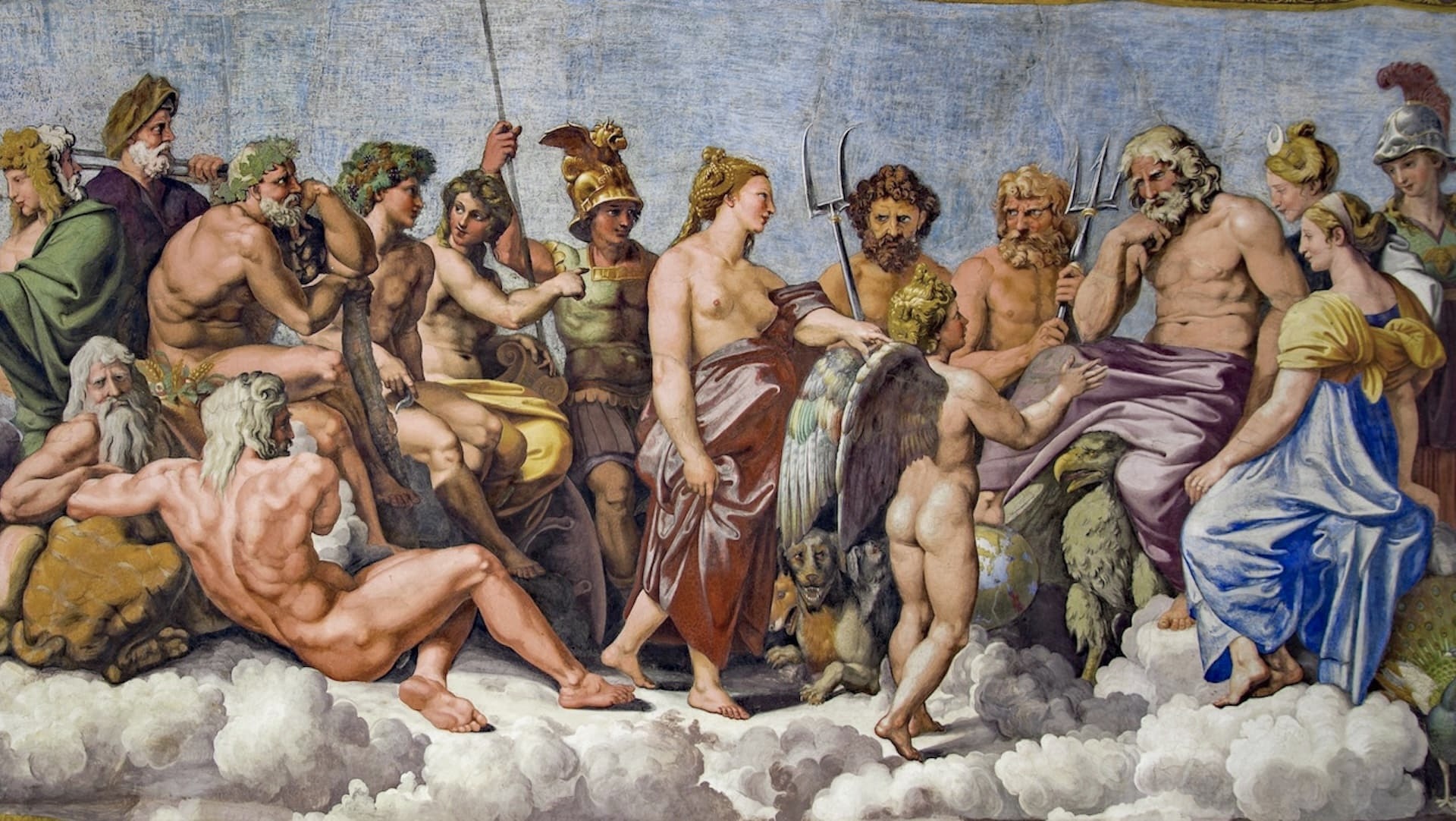A HYMN TO LOVE AND BEAUTY
The hall of Raphael
Santi
and his pupils has
gone down
in art history as the
Loggia
of Psyche.
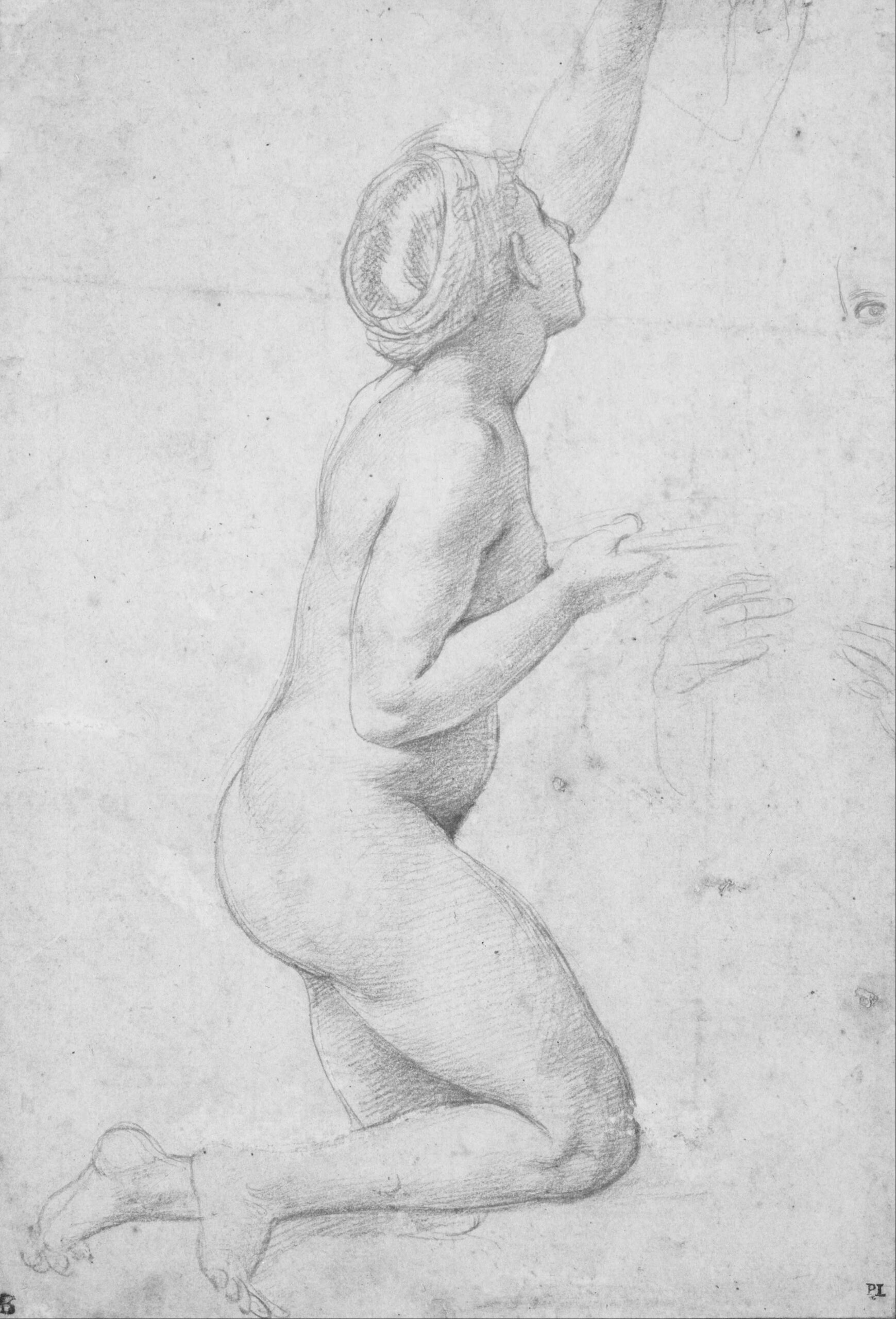
When Raphael completed the Triumph of Galatea, the banker Agostino Chigi commissioned him to decorate the next room in the Villa Farnesina (Villa Farnesina is a monument of architecture and art of monumental painting of the High Renaissance. The villa is located in Rome, near the right bank of the Tiber).
This hall has entered the history of art under the name “Psyche’s Loggia” and serves as an eternal testament to the beauty that man is capable of creating with his own hands.
Psyche is the personification of the soul and breath in Greek mythology, often represented as a butterfly or a young girl with butterfly wings.
The plot basis of the paintings was the legend of Psyche as told by the ancient Roman poet Apuleius, author of the famous “Metamorphoses”.
According to Apuleius’ myth, Psyche was so beautiful that she could rival the beauty of Aphrodite (Venus) herself, who out of jealousy decided to destroy the young Psyche by sending her son Eros (Cupid) to punish her.
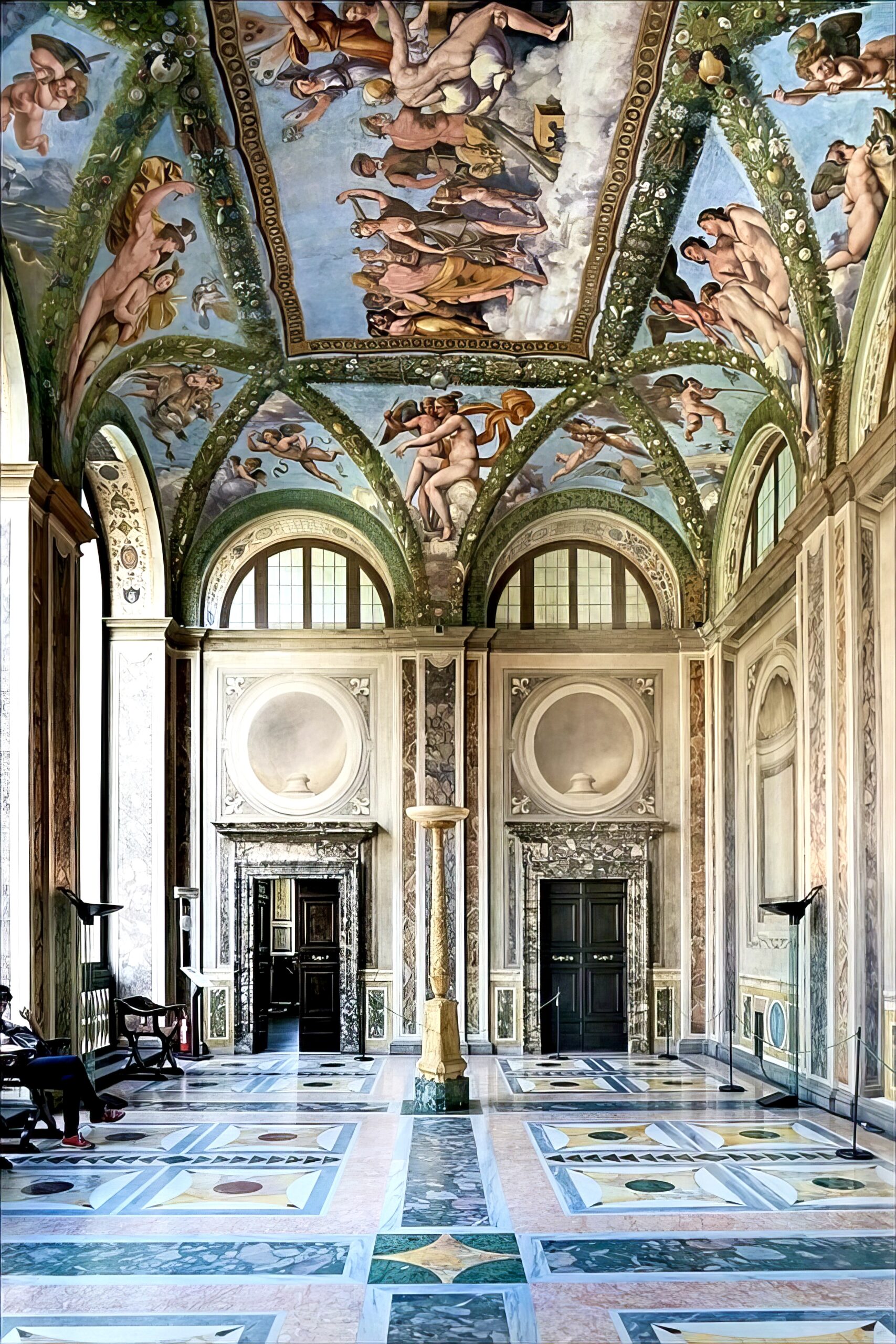
Raphael Santi with his pupils. "Psyche's Loggia." 1518-1520
However, Cupid was so captivated by the girl’s beauty that he took her to his palazzo He visited her exclusively at night so that Psyche could not see his face.
One day Psyche, on the advice of her sisters who whispered to her that her invisible husband was a dragon who would one day eat her together with her foetus, decided to break the promise she had made to her husband not to ask who he was.
The gullible Psyche lit a lamp and began to look at her husband, who turned out to be the beautiful Erotes; while she was admiring the beauty of his face and admiring her sleeping husband, a hot drop of oil fell from the lamp directly onto his shoulder. When he awoke, he was offended by the levity of his wife and flew away from her, and she, abandoned, went over the earth to seek her lover.
Psyche walked the lands for a long time until she was forced to bow down to her rival, Aphrodite. While sick from a burn, Eros lay at his mother’s side. Finding herself under the same roof with her husband, but separated from him, Psyche had to bear the instructions of Aphrodite, who, wishing her death, devised impossible tasks for her.
Thanks to her diligence and the help of others, Psyche fulfilled everything Aphrodite told her to do, until finally Eros recovered. Then he turned to the assistance of the supreme god of Olympus and was able to obtain the consent of the celestials to marry Psyche, who received immortality from Zeus and was joined the host of gods.
Many drawings that Raphael executed in preparation for this work have survived, but the realisation of the project according to the master’s sketches was carried out by his pupils led by Giovanni da Udine, which, however, does not detract from the splendour of these paintings.
Sketches and sketches allow us to get inside the creative process, when the artist tries to catch the image for the future painting, in the sketch we see the course of his thought, the speed and even the pressure of his hand.
It has always been interesting to me to observe how inspiration came to the master, or on the contrary, his persistent and constant search in spite of everything still helped him to find the most expressive form and the necessary image. That is why I consider copying to be one of the most important stages in the development of an artist, thanks to it, something new is necessarily emphasised, something with which there were difficulties before suddenly becomes very clear.
Inspired by Raphael’s sketches, I made a copy of the study for the frescoes of the Loggia Psyche.

Name of artist: RAPHAEL SANTI
Medium & materials: PAPER / CONTE CRAYON
Dimensions: H 27.90, W 18.70 cm
Location & year created: UNITED KINGDOM,
SCOTTISH NATIONAL GALLERY / 1518

Study of a nude.
Name of artist: IRÈNE SVIT
Medium & materials: PAPER / CONTE CRAYON
Dimensions: H 41.50, W 29.30 cm
Location & year created: BATUMI, GEORGIA / 2023
Villa Farnesina with its magnificent frescoes is a real treasure and attracts many visitors eager to see these magnificent works of art with their own eyes. There are two large frescoes in the plafond of the hall: the first depicts the wedding feast of Cupid and Psyche, while the second shows the gods receiving Psyche on Olympus. However, the most famous part of the mural is the fresco depicting Psyche’s meeting with the gods on Olympus.
All stages are framed with giant garlands of flowers and fruit creating an atmosphere of festivity and abundance. The Villa Farnesina was once surrounded by gardens of fruit trees, and these murals seem to be a natural extension of the blossoming garden outside the windows.
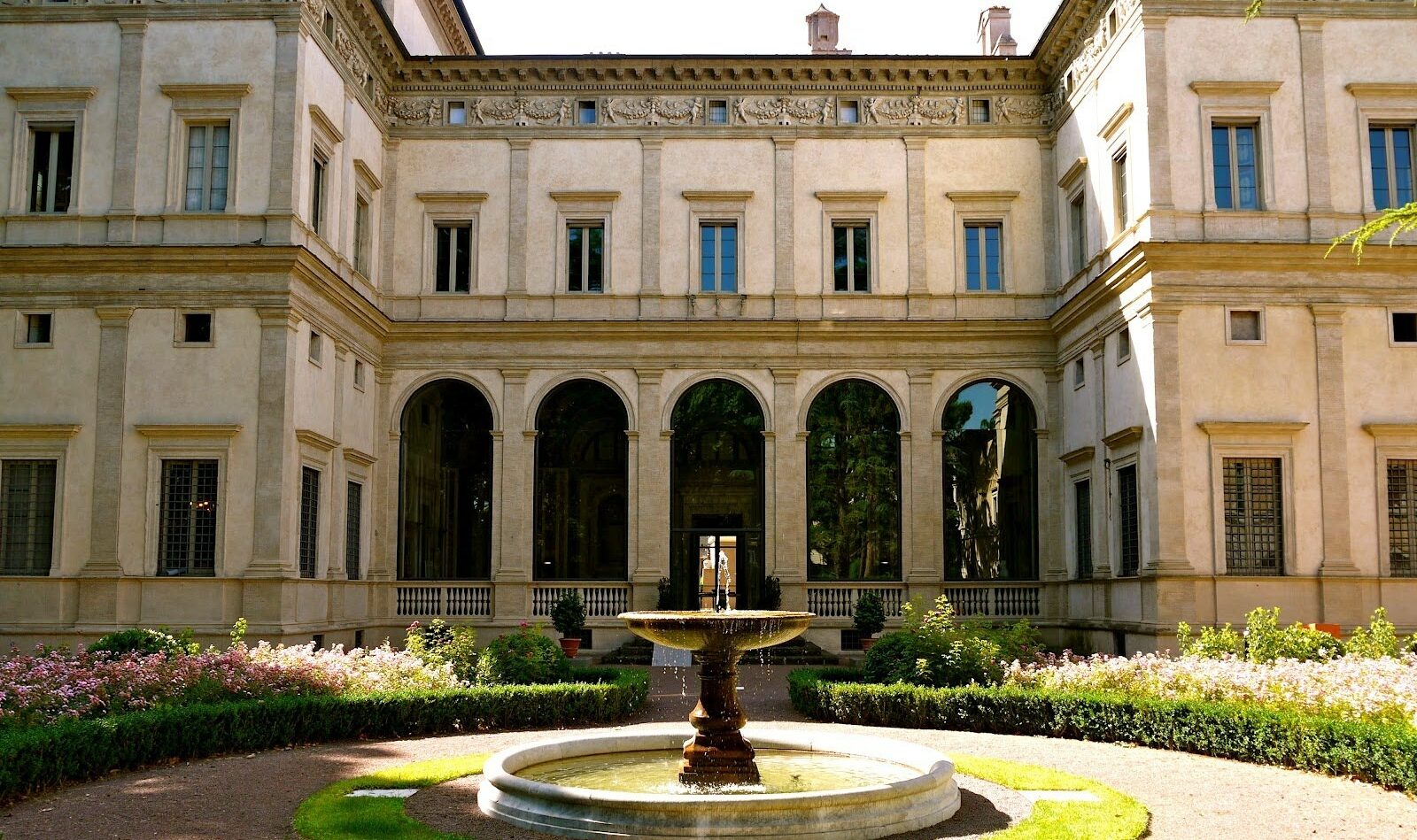
the Villa Farnesina
When Raphael completed the Triumph of Galatea, the banker Agostino Chigi commissioned him to decorate the next room in the Villa Farnesina (Villa Farnesina is a monument of architecture and art of monumental painting of the High Renaissance. The villa is located in Rome, near the right bank of the Tiber).
BLOG
This hall has entered the history of art under the name “Psyche’s Loggia” and serves as an eternal testament to the beauty that man is capable of creating with his own hands.
Psyche is the personification of the soul and breath in Greek mythology, often represented as a butterfly or a young girl with butterfly wings.
The plot basis of the paintings was the legend of Psyche as told by the ancient Roman poet Apuleius, author of the famous “Metamorphoses”.
According to Apuleius’ myth, Psyche was so beautiful that she could rival the beauty of Aphrodite (Venus) herself, who out of jealousy decided to destroy the young Psyche by sending her son Eros (Cupid) to punish her.
However, Cupid was so captivated by the girl’s beauty that he took her to his palazzo He visited her exclusively at night so that Psyche could not see his face.
One day Psyche, on the advice of her sisters who whispered to her that her invisible husband was a dragon who would one day eat her together with her foetus, decided to break the promise she had made to her husband not to ask who he was.
The gullible Psyche lit a lamp and began to look at her husband, who turned out to be the beautiful Erotes; while she was admiring the beauty of his face and admiring her sleeping husband, a hot drop of oil fell from the lamp directly onto his shoulder. When he awoke, he was offended by the levity of his wife and flew away from her, and she, abandoned, went over the earth to seek her lover.
Psyche walked the lands for a long time until she was forced to bow down to her rival, Aphrodite. While sick from a burn, Eros lay at his mother’s side. Finding herself under the same roof with her husband, but separated from him, Psyche had to bear the instructions of Aphrodite, who, wishing her death, devised impossible tasks for her.
Thanks to her diligence and the help of others, Psyche fulfilled everything Aphrodite told her to do, until finally Eros recovered. Then he turned to the assistance of the supreme god of Olympus and was able to obtain the consent of the celestials to marry Psyche, who received immortality from Zeus and was joined the host of gods.
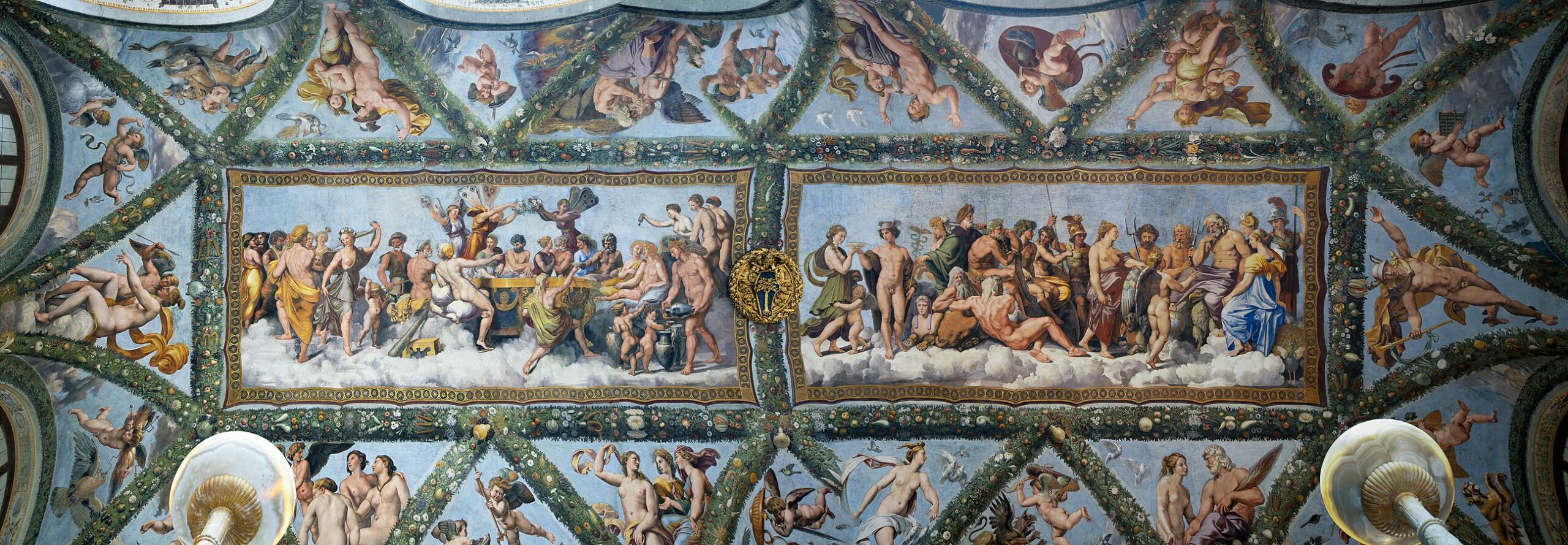
Raphael Santi with his pupils. "Psyche's Loggia." Plafond.1518-1520
Many drawings that Raphael executed in preparation for this work have survived, but the realisation of the project according to the master’s sketches was carried out by his pupils led by Giovanni da Udine, which, however, does not detract from the splendour of these paintings.
Sketches and sketches allow us to get inside the creative process, when the artist tries to catch the image for the future painting, in the sketch we see the course of his thought, the speed and even the pressure of his hand.
It has always been interesting to me to observe how inspiration came to the master, or on the contrary, his persistent and constant search in spite of everything still helped him to find the most expressive form and the necessary image. That is why I consider copying to be one of the most important stages in the development of an artist, thanks to it, something new is necessarily emphasised, something with which there were difficulties before suddenly becomes very clear.
Inspired by Raphael’s sketches, I made a copy of the study for the frescoes of the Loggia Psyche.
Villa Farnesina with its magnificent frescoes is a real treasure and attracts many visitors eager to see these magnificent works of art with their own eyes. There are two large frescoes in the plafond of the hall: the first depicts the wedding feast of Cupid and Psyche, while the second shows the gods receiving Psyche on Olympus. However, the most famous part of the mural is the fresco depicting Psyche’s meeting with the gods on Olympus.
All stages are framed with giant garlands of flowers and fruit creating an atmosphere of festivity and abundance. The Villa Farnesina was once surrounded by gardens of fruit trees, and these murals seem to be a natural extension of the blossoming garden outside the windows.
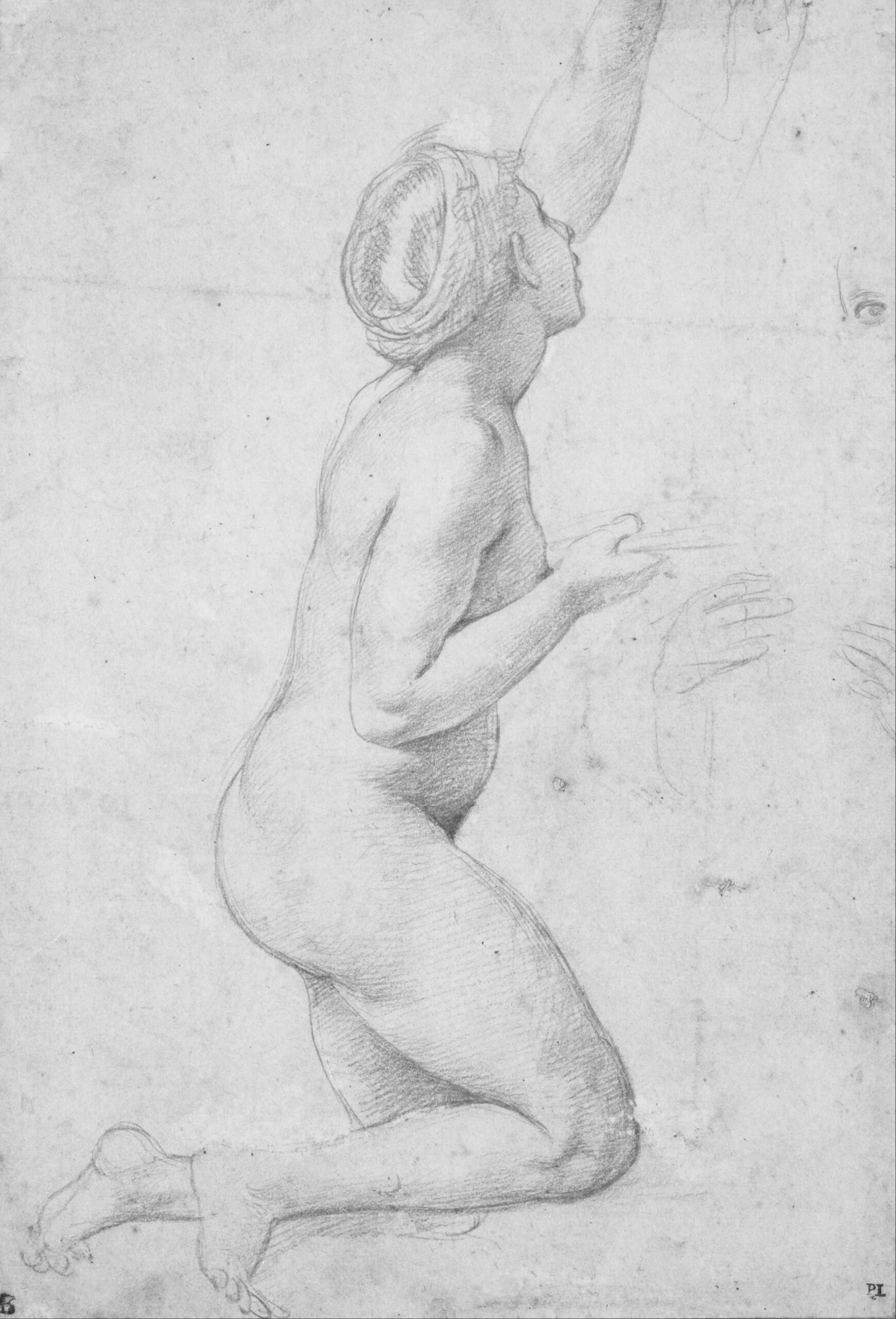
Sketch for the paintings of the Loggia of Psyche.
Study of a nude.
Name of artist: RAPHAEL SANTI
Medium & materials: Paper / Conte crayon
Dimensions: H 27.90, W 18.70 cm
Location & year created: Scottish National Gallery / 1518









